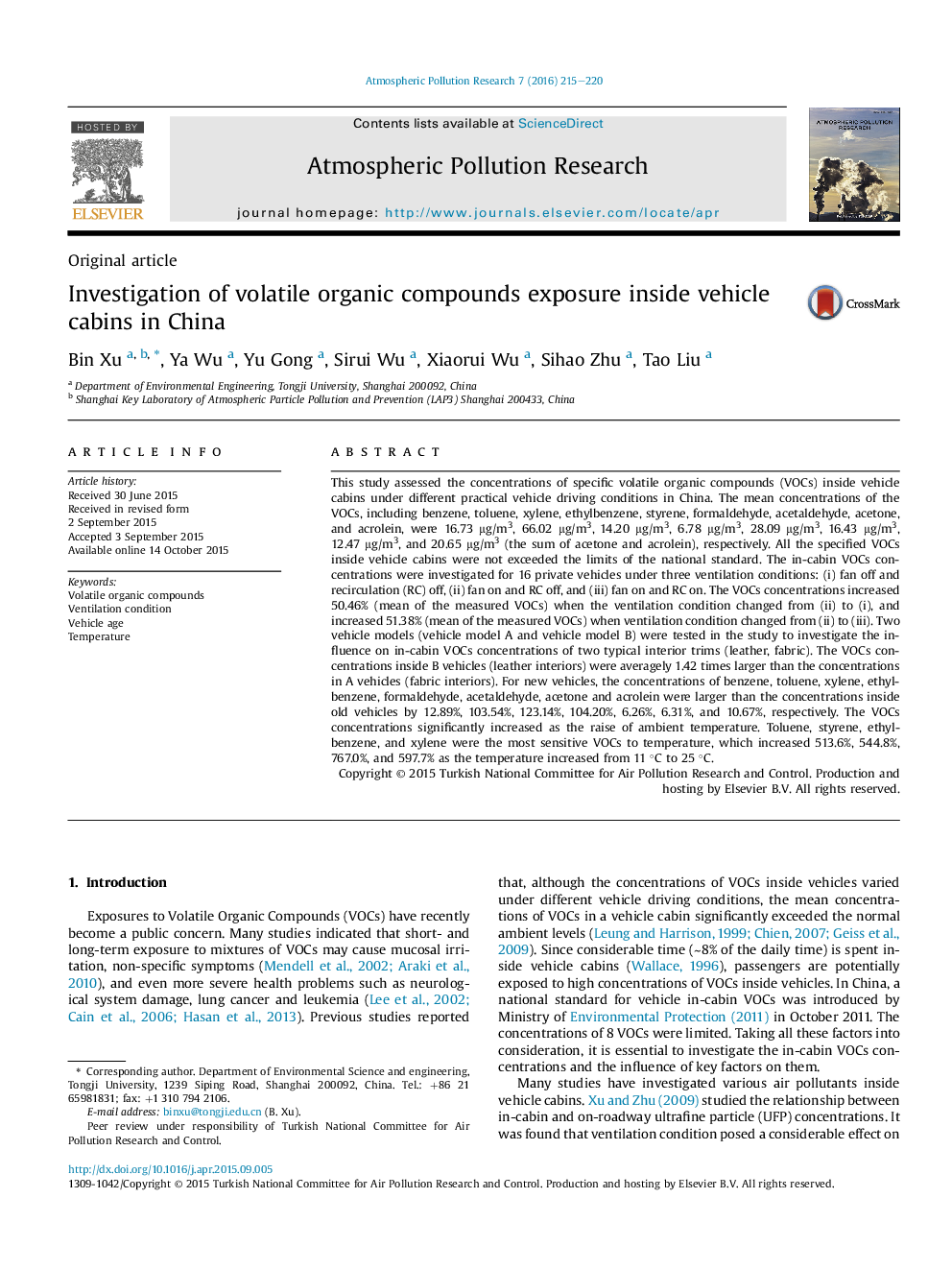| کد مقاله | کد نشریه | سال انتشار | مقاله انگلیسی | نسخه تمام متن |
|---|---|---|---|---|
| 10179865 | 1310518 | 2016 | 6 صفحه PDF | دانلود رایگان |
عنوان انگلیسی مقاله ISI
Investigation of volatile organic compounds exposure inside vehicle cabins in China
ترجمه فارسی عنوان
بررسی ترکیبات آلی فرار در داخل کابین خودرو در چین
دانلود مقاله + سفارش ترجمه
دانلود مقاله ISI انگلیسی
رایگان برای ایرانیان
کلمات کلیدی
ترکیبات آلی فرار، شرایط تهویه، سن خودرو، درجه حرارت،
موضوعات مرتبط
مهندسی و علوم پایه
علوم زمین و سیارات
علم هواشناسی
چکیده انگلیسی
This study assessed the concentrations of specific volatile organic compounds (VOCs) inside vehicle cabins under different practical vehicle driving conditions in China. The mean concentrations of the VOCs, including benzene, toluene, xylene, ethylbenzene, styrene, formaldehyde, acetaldehyde, acetone, and acrolein, were 16.73 μg/m3, 66.02 μg/m3, 14.20 μg/m3, 6.78 μg/m3, 28.09 μg/m3, 16.43 μg/m3, 12.47 μg/m3, and 20.65 μg/m3 (the sum of acetone and acrolein), respectively. All the specified VOCs inside vehicle cabins were not exceeded the limits of the national standard. The in-cabin VOCs concentrations were investigated for 16 private vehicles under three ventilation conditions: (i) fan off and recirculation (RC) off, (ii) fan on and RC off, and (iii) fan on and RC on. The VOCs concentrations increased 50.46% (mean of the measured VOCs) when the ventilation condition changed from (ii) to (i), and increased 51.38% (mean of the measured VOCs) when ventilation condition changed from (ii) to (iii). Two vehicle models (vehicle model A and vehicle model B) were tested in the study to investigate the influence on in-cabin VOCs concentrations of two typical interior trims (leather, fabric). The VOCs concentrations inside B vehicles (leather interiors) were averagely 1.42 times larger than the concentrations in A vehicles (fabric interiors). For new vehicles, the concentrations of benzene, toluene, xylene, ethylbenzene, formaldehyde, acetaldehyde, acetone and acrolein were larger than the concentrations inside old vehicles by 12.89%, 103.54%, 123.14%, 104.20%, 6.26%, 6.31%, and 10.67%, respectively. The VOCs concentrations significantly increased as the raise of ambient temperature. Toluene, styrene, ethylbenzene, and xylene were the most sensitive VOCs to temperature, which increased 513.6%, 544.8%, 767.0%, and 597.7% as the temperature increased from 11 °C to 25 °C.
ناشر
Database: Elsevier - ScienceDirect (ساینس دایرکت)
Journal: Atmospheric Pollution Research - Volume 7, Issue 2, March 2016, Pages 215-220
Journal: Atmospheric Pollution Research - Volume 7, Issue 2, March 2016, Pages 215-220
نویسندگان
Bin Xu, Ya Wu, Yu Gong, Sirui Wu, Xiaorui Wu, Sihao Zhu, Tao Liu,
